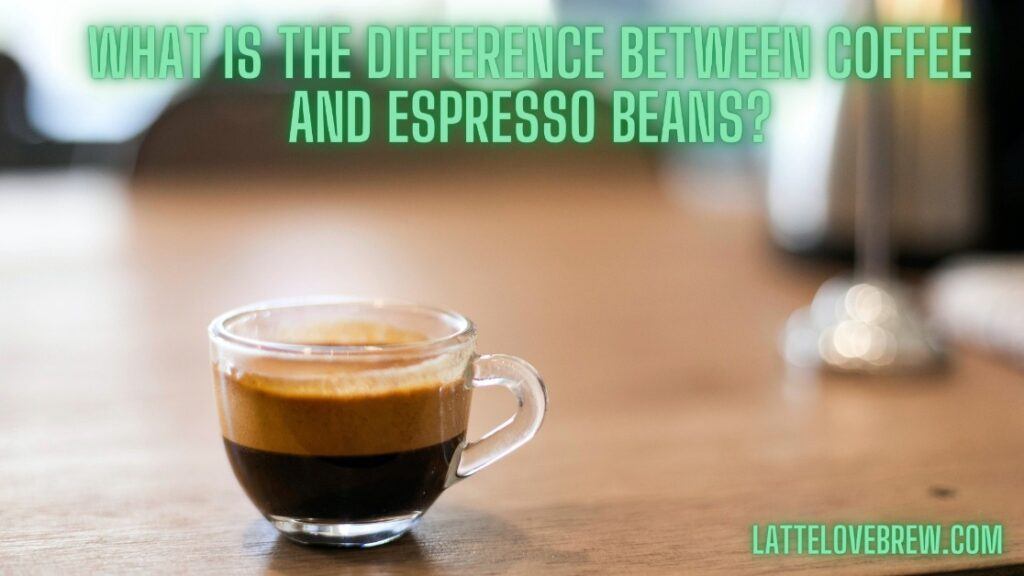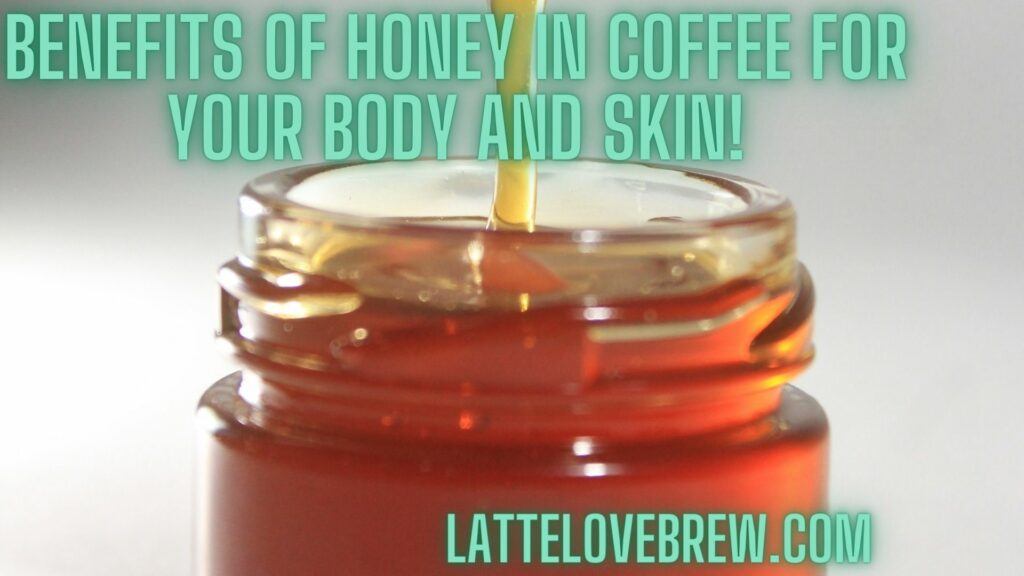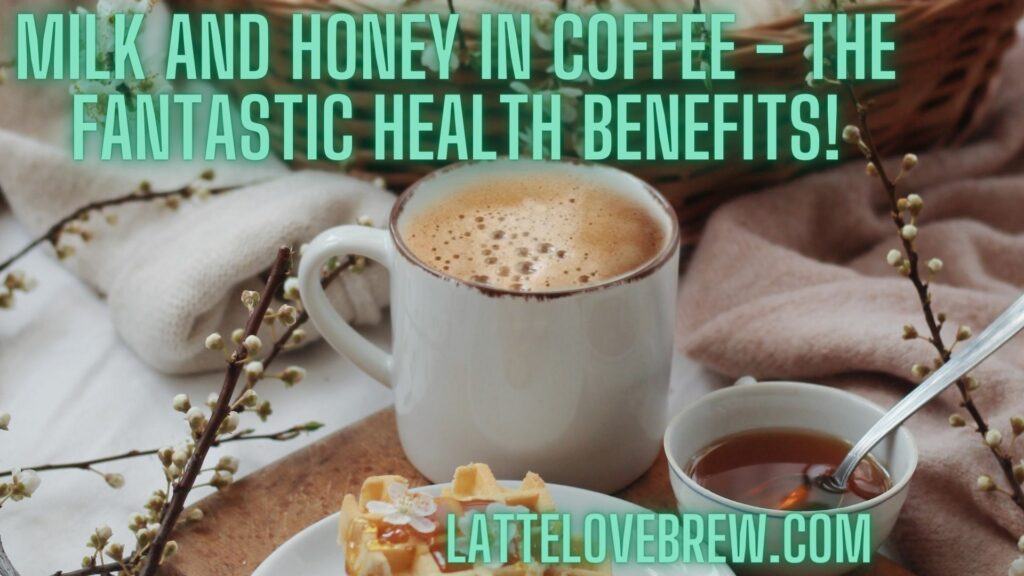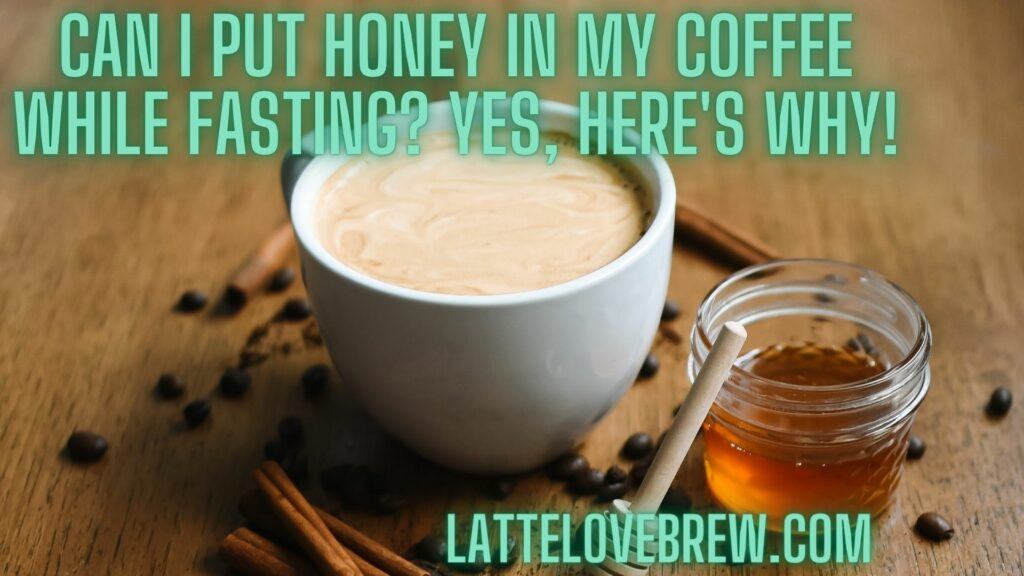Last updated on October 27th, 2023 at 14:23
In this article I am going to answer the above posed question – “What is the difference between Coffee and Espresso Beans?” to help you know the difference. I’ll also discuss and address the age-old “Do espresso beans have more caffeine than filter coffee or regular coffee?” belief and if it is true…or not!
By the time you have finished reading this post, you will, pardon the pun, have a good grounding on the main differences between regular coffee and espresso coffee beans.
For those of you that are in a rush, I’ll tell you straight away what the difference is, and it is all about time.
What Is The Difference Between Coffee and Espresso Beans?
Table Of Contents
- 1 What Is The Difference Between Coffee and Espresso Beans?
- 2 Do Espresso Beans Have More Caffeine?
- 3 The Difference Between Coffee And Espresso Machine
- 4 Can You Use Dark Roast Coffee In Place Of Espresso?
- 5 The Difference Between Espresso Roast Profile Vs Dark And Medium Roast
- 6 Selecting Coffee Beans For Espresso – Can You Use Coffee Beans For Espresso?
- 7 Frequently Asked Questions About What Is The Difference Between Coffee And Espresso Beans?
- 7.1 Are Coffee Beans The Same As Espresso Beans?
- 7.2 Can Regular Coffee Beans Be Used For Espresso?
- 7.3 Is Espresso Coffee Different From Regular Coffee?
- 7.4 Is Espresso Coffee Stronger Than Coffee?
- 7.5 Can You Make Espresso With Regular Coffee Maker?
- 7.6 Can You Use Normal Coffee Beans For Espresso?
- 7.7 Are Espresso Beans Different From Regular?
- 7.8 Is Espresso Coffee The Same As Regular Coffee?
- 8 Frappé-ing It All Up – What Is The Difference Between Coffee And Espresso Beans?
Espresso coffee beans get roasted for longer and are darker than the coffee beans that are used for regular drip coffee.
An espresso bean is roasted beyond their second crack in the roaster, giving it a deeper and toasted flavor.
Due to the roasting period being greater, the beans are less acidic and more oil-y, meaning you will have a fuller, more intense flavor.
The main difference between espresso and regular brewed coffee is in the way it is elaborated and the concentration of the final coffee product. Typically, an espresso is brewed at a 1:2 ratio while other coffees are brewed at 1:15 to 1:18 ratio.
The amount of total dissolved solids ranges from 8% to 12% in an average shot of espresso. In a pour over coffee the total amount of dissolved solids is typically 1.2% to 1.3%. That makes an espresso 8 to 10 times deeper and more intense flavor than regular pour over coffee.
You can consider it as a more concentrated coffee.
The coffee brewing technique is also very different in comparison to other hot and cold coffee brewing methods. A good espresso can be made in 30 seconds with other methods of elaboration taking up to 3 or 4 minutes be it a cappuccino, Turkish coffee, black coffee or any other regular shot of coffee.
The exception to this is Starbucks cold pressed espresso, which is made as the name tells you with cold water. They also use a different type of espresso machine which takes longer, up to an hour to make and produces a smoother, sweeter, less acidic taste. Despite being much longer than a traditional espresso maker, the wait is worth it for a very nice and different tasting cold-press espresso.
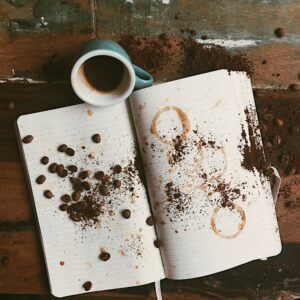
Read: Making coffee with espresso beans
Do Espresso Beans Have More Caffeine?
I’m sure all friends fans remember that episode where Joey over does his espresso by having a few too many and ending up hyperactive, but do espresso beans really have more caffeine than regular coffee beans?
The simple answer is a resounding no N-O.
It is an urban myth that espresso has a greater caffeine content than a regular cup of drip coffee, regular coffee or ground coffee.
The reason for this is actually quite simple. Espresso beans are roasted for longer than light, medium or dark roasted coffee and a large portion of the caffeine content is burned off during the roasting process.
However,
on a per-ounce basis, a cup of espresso still has a high concentration of caffeine. Without a doubt, if you were to consume an ounce per ounce equivalent, or a full 8 Oz cup, you would certainly be in for a serious caffeine kick much greater than a cup of drip coffee or any other.
There is no doubting the caffeine per ounce level of an espresso shot is much greater than cold brew coffee, regular hot coffee black coffee or any other regular cup of coffee.
A regular cup of coffee (8 Oz) has around 95 mg of caffeine while a cold brew coffee has 200 mg per 16 oz cup, where a shot of espresso has 75 mg.
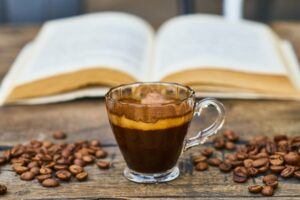
The Difference Between Coffee And Espresso Machine
The principle difference between a regular coffee machine and an espresso machine is that a regular drip-brewed coffee machine uses a more coarse, thicker grind than the much finer ground coffee powder-like grind that you associate with and use with an espresso machine.
Also,
with an Espresso Machine, you can expect your coffee to be ready and poured in around 30 seconds. It is the finely ground coffee powder that results in the bolder flavor.
While you can use a regular coffee bean in your espresso machine, but the shot of espresso that you will get as a result will not be anywhere as good with a fair chance it will taste rather sour and off.
I strongly suggest that if you want a quality espresso shot at home, you use an espresso coffee bean to get the rich crema and distinct flavor extraction.
It is the extraction process that gives espresso its distinctive flavor and the layer of crema on top. You will not get this with drip coffee, filter coffee or other methods of elaboration or extraction.
You really need that forcing of hot water through the tightly packed coffee grounds to get that distinctive look and taste of an authentic espresso.

Can You Use Dark Roast Coffee In Place Of Espresso?
It is worthy of noting that it is not important if you use an Arabica bean or Robusta coffee bean for your homemade shot of espresso as the difference between an espresso and an ordinary coffee bares no relationship to an arabica or robusta bean as the name and type is related to the roasted bean, which can of course be either bean or a mix of the beans.
If a Robusta is used, you will end up with a stronger caffeine content, while with an arabica bean a much darker and intense flavor. It is also of note the coffee used must be a coffee ground to a fine powder to get that rich crema and full-bodied espresso taste.
While it is technically possible and plausible for you to use a dark roasted coffee in place of espresso with the caveat that you grind the beans correctly for a good shot and use the right equipment to make it, you will still end up with a lighter tasting coffee and none of the crema that you would associate with a well-made shot of espresso.
Personally speaking, and from my experience I really would not go about mixing your coffee beans and roasts. If you absolutely must, I will say you will get a better drip coffee from using espresso roasted beans than you would an espresso using a dark roasted coffee bean or a lighter roast.
With that said, Starbucks has a blonde espresso, which by its very definition is a light roast.
The Starbucks blonde espresso is much lighter in flavor, highlighting the natural flavor and sweetness of the bean which would have been slightly roasted out.
For coffee snobs and hipsters that love their coffee and wish to enjoy an espresso that maintains the flavor profile of the bean, then a Starbucks blonde is worth trying out. This light roast maintains the rich crema that you would expect.
Unless you are a particular coffee lover I would not use single origin beans as there is no particular improvement in taste, flavor or body. Espresso has been from the very beginning a blend of other beans, mixing high altitude beans with lower altitude more common Brazilian beans. There is no real benefit in roasting out the full-bodied flavor of single-origin specialty beans.
The Difference Between Espresso Roast Profile Vs Dark And Medium Roast
An espresso roast involves the coffee bean getting roasted at a very high finishing temperature with the typical roasting temperature being as high as 460F (237C) to 470F (243C).
Other roasts the finishing temperature is much lower than what they use for their espresso.
A medium roast is brown in color with no oils on the beans surface and are roasted for longer than light roasts. This type of roast has more flavor and can take on a richer taste like a honey caramel taste and even a fruity less acidic taste, a real party for your taste buds.
A dark roast is often very dark like a dark chocolate and almost black in color.
The roasting temperature is very similar to that of an espresso at 460F (240C) to 480F (280C), giving a smoky, bitter and often burnt taste.
The original flavor of the coffee bean is often roasted out with a darker roast. The beans often have a very bright shiny look due to the oils coming to the surface. This kind of deep roast is also less acidic.
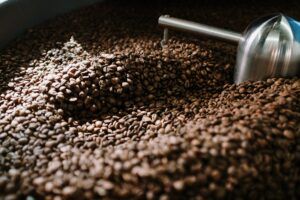
Selecting Coffee Beans For Espresso – Can You Use Coffee Beans For Espresso?
No,
when you are selecting beans for an espresso, they should be darker than regular coffee beans. With that in mind, “dark” or “darker roast” is a very vague and non-specific term.
For coffee lovers there are as many shades of dark as there shades of gray!
Selecting the best coffee beans for espresso you should look for something that is in the middle of the roast spectrum, not too dark and not too light. One that is a shade or two darker than a medium to darkish roast should get you a good tasting espresso and great results for flat whites and lattes.
Frequently Asked Questions About What Is The Difference Between Coffee And Espresso Beans?
Are Coffee Beans The Same As Espresso Beans?
Yes, since all coffee beans start out as green coffee beans and are exactly the same in every possible way except the roast level.
The only difference with espresso beans is that they have beans roasted to a different level. Any coffee bean can be taken to an espresso roast, be they an arabica or robusta bean.
Can Regular Coffee Beans Be Used For Espresso?
Yes, you can use regular coffee beans to make an espresso as long as they are of a dark roast and are freshly roasted. It is a combination of the water pressure and fresh oily beans that produce the distinctive thick, rich crema on top.
If you are using beans that are not a dark roast, or at the very least a medium-dark, you will probably not get the thick rich crema on top.
Is Espresso Coffee Different From Regular Coffee?
Yes, a shot or espresso is very different from regular coffee beverages. It is denser, stronger and bolder in flavor and texture than other coffee drinks. The result of the distinct difference is due to the strong coffee to water ratio of 1:2.
Yet it, a shot of espresso, is often made with the same coffee beans; the difference is due to the brewing method and technique.
Is Espresso Coffee Stronger Than Coffee?
Yes, a shot of espresso is stronger than regular coffee in terms of flavor. It’s bold, strong and with a dense and enjoyable texture.
It is also stronger in terms of caffeine content on a per-volume basis as an espresso shot contains 65 milligrams to 75 milligrams per ounce (30 ml).
For a matter of clarity and fact, an espresso shot does not have more total caffeine than other coffee drinks due to the lack of volume. A Percolator coffee and French press coffee can have 150 mg to 200 mg per 12 ounces (360 ml) cup.
Can You Make Espresso With Regular Coffee Maker?
No,
you can’t make an authentic espresso with a regular espresso. You need the 9 bars (130 PSI) of water pressure to get the rich, thick crema on top. With a moka pot and an aeropress you can get an espresso like coffee but not an espresso.
Both lack the required pressure to really pull off an excellent shot that matches that of an espresso.
Can You Use Normal Coffee Beans For Espresso?
Technically you can use normal coffee beans or regular coffee beans in your home espresso machine, but you will not get a rich tasting espresso shot without using a freshly roasted dark roast coffee bean. As you need the oils to get the rich crema on top.
The crema is a result of the coffee oil on the exterior, which is what dark roasts have. Freshly roasted coffee has more. You need the water pressure of 130 PSI (9 Bar) of pressure also.
Are Espresso Beans Different From Regular?
All coffee beans start their life out as the same – the seeds of coffee cherry growing on a coffee tree. They are then processed, dried and start out as green beans, often referred to as unroasted.
An espresso bean has been roasted to at least a French roast, the second darkest of all dark roasts. They are then ground to a fine powder like grind size and brewed using an espresso machine.
Is Espresso Coffee The Same As Regular Coffee?
No, espresso coffee is different from regular coffee as it is denser, thicker and much stronger than regular coffee. It’s a more concentrated coffee brewed with a more focused coffee to water ratio of 1:2.
Frappé-ing It All Up – What Is The Difference Between Coffee And Espresso Beans?
Now you know what is the main difference between coffee and espresso beans is not only in the way in which it is made and elaborated, the finer ground it is in the roast as well, being roasted at a hotter temperature to give it its distinctive taste and rich crema that makes it so distinctive.
It is the combination of all the aforementioned elements that makes an espresso stand out with its full-bodied concentrated and focused coffee flavor.
Join our fun, very friendly and free coffee community on social media and tell us about the great beans you are brewing with! Find us on Facebook/Meta.

